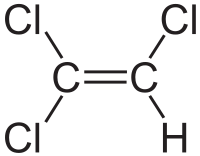
Study on the community structure and function of anaerobic granular sludge under trichloroethylene stress
Sign Up to like & getrecommendations! Published in 2021 at "Ecotoxicology"
DOI: 10.1007/s10646-020-02343-9
Abstract: Trichloroethylene (TCE) is one of the most common groundwater pollutants. It is carcinogenic, teratogenic, mutagenic and poses a serious threat to human health and the environment. Therefore, reducing the environmental toxicity of TCE is of… read more here.
Keywords: trichloroethylene; community; function; study ... See more keywords

Catalytic Oxidation of Trichloroethylene over RuO 2 Supported on Ceria-zirconia Mixed Oxide
Sign Up to like & getrecommendations! Published in 2019 at "Chemical Research in Chinese Universities"
DOI: 10.1007/s40242-019-8222-6
Abstract: Ru/Ce-Zr catalysts were prepared by impregnation of Ru on the hydrothermally synthesized Ce-Zr mixed oxide with different molar ratio of Ce/Zr. The resultant products were systematically characterized by inductively coupled plasma(ICP), X-ray diffraction(XRD), scanning electron… read more here.
Keywords: oxidation trichloroethylene; ruo supported; mixed oxide; catalytic oxidation ... See more keywords

Element doping of biochars enhances catalysis of trichloroethylene dechlorination
Sign Up to like & getrecommendations! Published in 2022 at "Chemical Engineering Journal"
DOI: 10.1016/j.cej.2021.132496
Abstract: Abstract Biochar (BC) is used for reductive dehalogenation and detoxification of chlorinated ethylenes, and its catalytic reactivity strongly depends on the type and composition of the biomass. This study aimed to alter the catalytic activity… read more here.
Keywords: catalytic reactivity; trichloroethylene; doping biochars; reactivity ... See more keywords

Quicklime-induced changes of soil properties: Implications for enhanced remediation of volatile chlorinated hydrocarbon contaminated soils via mechanical soil aeration.
Sign Up to like & getrecommendations! Published in 2017 at "Chemosphere"
DOI: 10.1016/j.chemosphere.2017.01.067
Abstract: Mechanical soil aeration is used for soil remediation at sites contaminated by volatile organic compounds. However, the effectiveness of the method is limited by low soil temperature, high soil moisture, and high soil viscosity. Combined… read more here.
Keywords: soil aeration; mechanical soil; trichloroethylene; remediation ... See more keywords

Surfactant-enhanced PEG-4000-NZVI for remediating trichloroethylene-contaminated soil.
Sign Up to like & getrecommendations! Published in 2018 at "Chemosphere"
DOI: 10.1016/j.chemosphere.2017.12.070
Abstract: In this study a NZVI was prepared by the liquid phase reduction method. The modified NZVI obtained was characterized by BET, TEM and XRD. The results showed that the iron in the PEG-4000 modified material… read more here.
Keywords: peg 4000; modified nzvi; trichloroethylene; iron ... See more keywords

Downregulation of miR-133a contributes to the cardiac developmental toxicity of trichloroethylene in zebrafish.
Sign Up to like & getrecommendations! Published in 2020 at "Chemosphere"
DOI: 10.1016/j.chemosphere.2020.126610
Abstract: Trichloroethylene (TCE), a widely used organic solvent, is a common environmental pollutant. Increasing evidence indicates that maternal TCE exposure is associated with congenital cardiac defects, but the underlining mechanisms remain largely unknown. In this study,… read more here.
Keywords: heart; tce; trichloroethylene; mir 133a ... See more keywords

Electrochemical reductive remediation of trichloroethylene contaminated groundwater using biomimetic iron-nitrogen-doped carbon.
Sign Up to like & getrecommendations! Published in 2021 at "Journal of hazardous materials"
DOI: 10.1016/j.jhazmat.2021.126458
Abstract: Electrochemical dechlorination is a prospective strategy to remediate trichloroethylene (TCE)-contaminated groundwater. In this work, iron-nitrogen-doped carbon (FeNC) mimicking microbiological dechlorination coenzymes was developed for TCE removal under environmentally related conditions. The biomimetic FeNC-900, FeNC-1000, and… read more here.
Keywords: nitrogen doped; doped carbon; trichloroethylene; contaminated groundwater ... See more keywords

The critical role for TAK1 in trichloroethylene-induced contact hypersensitivity in vivo and in CD4+ T cell function alteration by trichloroethylene and its metabolites in vitro.
Sign Up to like & getrecommendations! Published in 2019 at "Toxicology and Applied Pharmacology"
DOI: 10.1016/j.taap.2019.114705
Abstract: Occupational exposure to trichloroethylene (TCE) has been associated with severe, generalized contact hypersensitivity (CHS) skin disorder, which is considered a delayed-type hypersensitivity reaction mediated by antigen-specific T cells. Transforming growth factor-β activated kinase-1 (TAK1) is… read more here.
Keywords: trichloroethylene; cd4 cell; tce; tak1 ... See more keywords

Plasma degradation of trichloroethylene: process optimization and reaction mechanism analysis
Sign Up to like & getrecommendations! Published in 2021 at "Journal of Physics D: Applied Physics"
DOI: 10.1088/1361-6463/ac40bb
Abstract: In this study, a multi-pin-to-plate negative corona discharge reactor was employed to degrade the hazardous compound trichloroethylene (TCE). The response surface methodology was applied to examine the influence of various process factors (relative humidity (RH),… read more here.
Keywords: analysis; tce; physics; trichloroethylene ... See more keywords

Occupational trichloroethylene exposure and antinuclear antibodies: a cross-sectional study in China
Sign Up to like & getrecommendations! Published in 2022 at "Occupational and Environmental Medicine"
DOI: 10.1136/oemed-2022-108266
Abstract: Objectives There has been concern over the possible risk of autoimmune diseases from exposure to trichloroethylene (TCE), an industrial solvent and common pollutant near hazardous waste sites. Studies of TCE-exposed lupus-prone mouse strains have reported… read more here.
Keywords: exposure; trichloroethylene; sectional study; cross sectional ... See more keywords

Trichloroethylene increases pulmonary endothelial permeability: implication for pulmonary veno-occlusive disease
Sign Up to like & getrecommendations! Published in 2020 at "Pulmonary Circulation"
DOI: 10.1177/2045894020907884
Abstract: Trichloroethylene exposure is a major risk factor for pulmonary veno-occlusive disease. We demonstrated that trichloroethylene alters the endothelial barrier integrity, at least in part, through vascular endothelial (VE)-Cadherin internalisation, and suggested that this mechanism may… read more here.
Keywords: occlusive disease; trichloroethylene; veno occlusive; pulmonary veno ... See more keywords